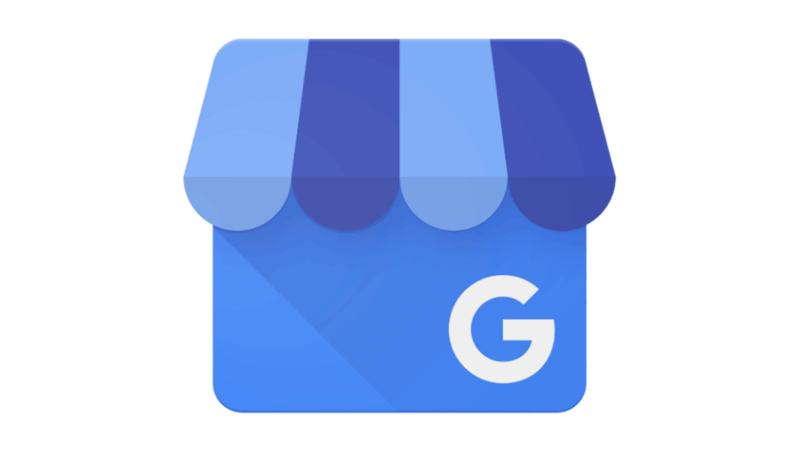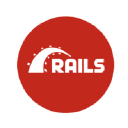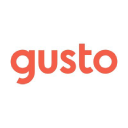
How We Built A Platform To Buy Used Cars And Grew It To A $6M/Year Business
Hello! Who are you and what business did you start?
Hey Starter Story, we are Eric and Valerie Mitz and we're the founders of The Clunker Junker Cash For Cars; We also happen to be husband and wife! We pitch The Clunker Junker as a quick and easy way to sell your junk or used car.
Our mission is to take the stress and headaches out of selling an older or less than perfect vehicle by providing a modern website and software platform, quickly picking up cars free of charge, and paying the owners right on the spot by either cash or check. To date, we've bought hundreds of thousands of cars all across the country and helped countless customers make some extra cash for whatever they may need it for. Rent? Bail money? YOLOing on GME? Hey, you do you. We're a judgment-free zone.
Have you ever tried selling a used car on an online classifieds site like Craigslist or Offer Up? It's an absolute nightmare! You can write the most detailed and comprehensive classified ad the internet has ever seen, include high-resolution photos of every square inch of your car, present the vehicle at a TEDx conference, and still, Ken M. from Wichita will ask "How many miles???", or "Will u trade it for a Playstation 4?"; he'll even throw in a copy of Madden 2017 to sweeten the deal. Classic Ken.
Our service makes test drives, no-shows, and tire kickers a thing of the past. We'll make you an offer instantly, pick up your vehicle for free, and put some extra cash in your pocket.
We've been able to grow The Clunker Junker into a business that generated close to $6 million in revenue in 2020 with a net profit of $4.1 million. We've had a lot of fun, cried a lot of tears, and met some interesting characters along the way. Ultimately the business has completely changed the course of our lives.

What's your backstory and how did you come up with the idea?
The Clunker Junker was forged in the fires of Mount Doom by the Dark Lord Sauron...no no, I'm sorry, I'm thinking of a different origin story.
Persistence is also a major key. Even when things are looking grim and you just want to quit, you have to keep on keeping on.
It was 2009 in the midst of "The great recession". Eric was a few years out of college where he received his bachelor of science in Computer Information Science from the University of Massachusetts, Dartmouth, and was working at what is now DellEMC as a software engineer. Valerie was waist-deep in law school at Roger Williams University in Bristol, Rhode Island attempting the world record for student loan debt.
For a couple of years at this point, Eric had been enamored with the "make money online" and affiliate marketing movement of the time and had already had a few successful side projects. He built a software product called "Poll Factory'' that generated clickbait-style "Who would win in a thumb war, Beyoncé or Taylor Swift?" landing pages for PPC arbitrage, and a couple of small-time eBay affiliates sites. The income generated from these products allowed us to put a down payment on our first home.
Looking for the next affiliate marketing site to build, we came across a company that had an affiliate program for a service that was pretty unique in a space otherwise filled with cringe-worthy e-books and scammy acai berry products: Junk car removal. They would pay $10 for every qualified lead for someone looking to sell a junk car. Being that both Eric and Valerie were HUGE gearheads, and also liked money, this seemed like a match made in heaven.
At the same time, Eric had become "internet friends'' with some weirdo who would comment on every blog post he made on his personal website where he was documenting our make-money-online adventures. That weirdo's name was Tevin. He's still weird, and he's still Eric’s best friend, but he's no longer involved with The Clunker Junker.
We asked Tevin if he wanted to help grow a new affiliate website to sling junk cars. Eric would build the new website and he would handle the SEO. The rest, as they say, is misery. History? The rest is history.
Take us through the process of designing, prototyping, and manufacturing your first product.
The Clunker Junker started as a basic and bare-bones affiliate website. It had a zipcode box on the homepage that would simply redirect users to our affiliate link when a zip code was entered. At this point, we never talked to a customer or touched a car. Send a lead, collect $10, rinse and repeat. All in all the initial investment for the original website was about $20 for a domain and some cheap shared hosting. To this day we have never taken a single dollar of investment from an outside source, for better or for worse.
The original website was built in about 3 hours in one evening after work. There was never much thought, testing, or meticulous planning that went into it. After already trying so many previous affiliate projects, The Clunker Junker was just another “handful” we threw at the wall, hoping it would stick. For whatever reason, this one turned out to be extra sticky.

We started the usual SEO song and dance of creating crappy backlinks from “Web 2.0” properties or whatever the gurus at the time were slinging and started to get a trickle of web traffic from organic Google search (SEO). This is when we got our first inclination that something truly special was happening. The website, with its single zip code box, was converting leads like crazy. $50/day. $100/day. Before we knew it, our hastily thrown-together website was bringing in $1500 per day, and we were living on Easy Street. Dreams of yachts, exotic cars, and mansions full of scantily clad women started to fill our heads; life was good.
Until it wasn’t.
In June of 2011, our world collapsed overnight. We had gotten cocky, overconfident. Nothing could stop us, we’re on our way to the moon! But there was one force of nature to which we hadn’t given enough respect:
Google.
Like a black hole sucking us back to Earth, Google had banned The Clunker Junker from search results. The dreaded “manual spam action”. You see, in our magnificent ascent to greatness, we had taken a few shortcuts and employed some blackhat SEO techniques. Tevin and I were bad, bad boys, and Google made sure we paid for it.

We spent the next few months trying to come up with a plan to fix our egregious mistakes. We made changes and sent several of what are called “Reconsideration requests” to Google, begging them to resuscitate The Clunker Junker. We did eventually get our manual action lifted almost a year later, but our web traffic was not the same.
As if to add insult to injury, not long after we had our ban lifted and started to recover some of our web traffic, we hit yet another major problem. The company we were selling leads to was restructuring and closed down their affiliate program entirely. Another loss of income overnight. The Clunker Junker was dead.
Long Live The Clunker Junker!
Describe the process of launching the business.
Here starts the story of the real Clunker Junker. The Clunker Junker that Valerie and Eric would spend the next 10 years building into a legitimate business that provides real value to customers.
After the one-two punch that hit us from Google and our affiliate provider, we were left with a website that had less intrinsic value than a Bitcoin but was still attracting a modest number of visitors with promises of buying their junk cars. Unfortunately, we had nowhere to send our visitors. Valuable web traffic was being wasted.
At the same, Valerie had just finished up law school and passed the bar in Massachusetts, Rhode Island, and our new home: The Sunshine State. Eric was able to convince his employer, EMC, to allow him to work fully remotely from Florida. This was long before COVID and was a big deal back then. It was risky and scary but ultimately turned out to be a great life decision.
I remember the exact moment we decided to take another chance on The Clunker Junker. We said, “Why don’t we just provide the actual service ourselves? What was our affiliate provider doing that we’re not capable of”? Not being able to come up with a good answer, Valerie would start cold-calling junkyards and salvage yards across the nation. We signed up our first two partners (buyers) on the first day.
Eric got to work completely rebuilding the website to be not just an affiliate site, but a brand new custom-built CRM, CMS, and software platform between junk car buyers and sellers. This would be the foundation for the platform we still use today.
Tevin was still around at this point, and his mother and Father actually helped us tremendously in getting our buyer network off the ground by working the phones along with Valerie; we are forever thankful for their early help. It turned out, however, that running a real business was a lot of work, with not much reward. Tevin decided he could no longer provide the attention the business needed as he was focusing on his growing career. We gave him one-third of the company’s assets, about $3300 at the time, and parted ways as business partners. I still consider Tevin to be my best friend, and he went on to do some truly amazing things as a global director of SEO of some small little companies you might have heard of: Expedia and TripAdvisor.
For the first few years of our new business model, The Clunker Junker was mostly just a middle man between old school junkyards and tech-savvy sellers trying to sell or get rid of their cars online. This still makes up a large percentage of our overall business, and we have created some state of the art software tools that allow our old school buyers to easily make instant “bids” on cars that come through the system based on hundreds of different criteria such as age, weight, location, and vehicle condition. On the seller side, we’ve developed a friction-less lead intake form that helps customers easily answer an otherwise complex web of questions about their vehicle’s condition; information that we need to generate an offer.

Taking it to the next level
By 2014 we had our first employee or two and we were looking to take things to the next level. Making a commission off the top of a transaction between buyer and seller is a great low-effort business model, but we wanted to do more. We were ready to become a car buyer ourselves!
We jumped through all the ridiculous hoops that the great state of Florida requires to get our auto dealer license and started buying vehicles ourselves. The vehicles are resold at wholesale auctions across the country, and we pocket the difference between what we buy the car for and how much it sells for, less any towing and auctions fees.
Where we might make between $10 and $30 commission on a “junk” vehicle, for vehicles that still have some life left in them we make an average of around $500 per vehicle, and in some cases, we have made up to $15,000 on a single car.
What allows us to do this is our secret sauce, our most closely guarded secret: our auction pricing algorithm. To make money selling vehicles at auction, you have to borrow a play from stock market investors: buy low and sell high. The problem is, if you try and buy too low, no one is going to accept your offer, or another company is going to offer more than you are. If you don’t buy low enough, you end up losing money when the vehicle finally sells. To find that sweet spot of profitability, you need to be able to predict how much a specific vehicle might sell for at auction.
That’s why we built the industry’s most advanced machine learning algorithms to predict the wholesale auction sale price of any vehicle in any condition. The algorithm learns from over 10 million previous auction transactions, as well as external factors like current fuel prices, seasons, and more. The AI performs some undisclosed voodoo magic and pops out a prediction for how much the vehicle will sell for. We’ve been able to tune our algorithm so well that we only lose money on less than 5% of the vehicles we send to auction, and many of those are because the vehicle’s condition was worse than expected.
Since launch, what has worked to attract and retain customers?
Customer acquisition is one of our greatest struggles. We still thrive and depend heavily on organic Google search traffic. We have invested hundreds of thousands of dollars in legitimate (white hat) SEO and content creation, including writing unique and targeted content for over 1000 cities across the nation. We work every day to try and stay ahead of the competition, and Google is often a very cruel mistress. We experience massive ups and downs every quarter when Google releases their “Core algorithm updates”; sometimes as much as 40% in either direction. Eric has even been medically diagnosed with a generalized anxiety disorder because of the constant stress and unpredictability.
Like good business owners, we continue to try and diversify our traffic streams. In recent years we have started investing heavily in Google ads. We are currently spending around $200,000 per month on ad spend with an ROI of about 15%. This is admittedly not great. There is a lot of room for improvement here to optimize our campaigns, and it’s something we’re actively working on.

Once a customer has entered their vehicle and contact information, they are injected into our highly automated follow-up system. If the offer they receive online is not accepted that day, our robot overlords will send automated emails and text messages over the next two weeks reminding customers that we’re ready to buy their car today. Of course, they can opt out at any time. More than half of the vehicles we buy come from these automated follow-ups.
How are you doing today and what does the future look like?
Like Shakira’s hips, the Google Analytics graph above doesn’t lie, The Clunker Junker has seen better days. The COVID-19 crisis, in combination with some recent Google search algorithm changes, has really taken its toll on our business. The silver lining to this is that it essentially forced us to figure out how to make money with Google ads, and while we still have a lot of work to do, we’ve been able to make it profitable and it now looks to be our biggest opportunity for growth.
The Clunker Junker is and has always been profitable since day one. Some of this is attributed to luck or being in the right place at the right time, but much of it is by design. We have always run The Clunker Junker with positive cash flow, always careful to never bite off more than we can chew. We jokingly call ourselves “Cockroaches” because while we’ve taken some hits along the way, it would take a nuclear winter to kill us off completely. Here is a breakdown of some numbers for 2020:
- Average Monthly Website visitors: 131,000 organic, 135,000 paid.
- Bounce rate: 35%
- Total revenue: $5.9 million.
- Total employee payroll expenses: $140,000
- Google Ad spend: $1.5 million
- Other expenses: $161,000
- Pre-tax profit: $4.1 million
- Profit margin: 69% (Nice)
Of course, this cautious approach is a double-edged sword. While it’s kept us alive for a long time, it’s also very likely stunted our full growth potential. Now that we have built up a comfortable nest egg, we are becoming less risk-averse and starting to think bigger.
As of this writing, The Clunker Junker has four awesome employees in addition to Eric and Valerie. We work close to 50/50 from home and our small office in Parrish. We are currently looking to hire one or two more customer service agents!
Our plans moving forward include some fairly big moves such as moving into Canada, entering the vehicle charity space, and creating our own affiliate program. We have some infrastructure to build to support these things first, and that is currently in progress!

Through starting the business, have you learned anything particularly helpful or advantageous?
The biggest lesson we’ve learned as business owners is just how difficult it can be to find and keep good talent. I never could have imagined just how arduous the hiring process could be, and hiring is the easy part. Keeping employees motivated, happy, and productive is something only found in fairy tales. I would love to offer some advice to aspiring entrepreneurs reading this, but we frankly haven’t figured it out ourselves.
Another unfortunate lesson we have learned is that dealing with the general public over the internet is absolutely mind-numbing and can have real-world consequences for one's mental health. We’ve been called every curse word and racial slur in this history of linguistics, we’ve been harassed, review bombed, and threatened with our lives; all over used cars! Of course, we’ve also had some really awesome customers, many of which have sold us multiple cars over the years, and we appreciate them greatly.
We’ve also learned a lot about ourselves. Valerie and Eric both grew up in lower-class households. Val’s Mom was paid piecework making leather jackets in a factory, and her dad was a blue-collar short-haul truck driver. Eric’s (single) Mom worked as a secretary at a halfway house, and the local town hall; his dad passed when he was 11 and left nothing but an old van he lived in for a while. Our parents taught both of us the value of the dollar, and how to work with what we’ve got.
Through starting and growing our business into a successful national company, it has become clear to us how much our humble upbringings reflect in the decisions we make every day and shaped our world views. We’ve always been more risk-averse than most, and aside from a slight addiction to exotic cars, live far below our means. In business, this conservatism has been what kept us alive through some of the tougher times (and as stated earlier, probably kept us from reaching our full potential).
What platform/tools do you use for your business?
A lot of The Clunker Junker’s tools are custom-built in-house. For example, our CRM, CMS, Invoicing, partner/buyer management, and more are all bespoke and tailored to our very specific needs. That’s not to say, however, that we don’t use any great tools!
- We use "Google’s Workspace" for email, team chat, and documents.
- Gusto for payroll - An absolute lifesaver. There is nothing we hate more than dealing with taxes, payroll, and other HR-related paperwork. Gusto handles all of it for a reasonable price per employee.
- Postmark for sending transactional emails.
- Helpwise for our shared team customer service email inboxes.
- JivoChat for chatting with our customers while they’re on our website.,
We have a custom-built phone system using:
Amazon Connect for our IVR system.
Twilio to store and retrieve voicemails.
Plivo for our fully custom text message platform.
Trello for managing high-level projects.
Google analytics for...analytic-y things.
Most of The Clunker Junker’s custom backend is built on old-school Ruby on Rails, with some Python and Perl here and there.
We use Amazon AWS for all of our server instances, including EC2, ECS, RDS, and S3.
What have been the most influential books, podcasts, or other resources?
Unfortunately, I don’t have a lot to offer here. I’ve never really been one to seek out influence and don’t regularly read or listen to content about the business. The only real business or self-help-related book I’ve ever read was “Four hour work week” by Tim Ferris, but I currently work about 84 hours a week, so I guess I didn’t take much away from it.
Valerie spends much of her limited free time scrolling through motivational social media accounts with uplifting phrases such as “Work hard now, sleep in your jet later,” or “Learn to rest, not to quit.” Or, if she’s really trying to motivate herself, listening to Cardi B or Rhianna at max volume.
Advice for other entrepreneurs who want to get started or are just starting?
Business-wise, the two most important aspects we would advise someone who is just starting with a business to focus on are creating documented processes and procedures, and to automate all the things! Automation has been such a huge part of our success, and it allows us to pull off some pretty amazing feats of customer service, accounting, and logistics with an extremely small team.

Persistence is also a major key. Even when things are looking grim and you just want to quit, you have to keep on keeping on. Be un-killable, be a cockroach!
Are you looking to hire for certain positions right now?
Yes! We are currently looking for another customer service representative. If you’re in the Sarasota, FL area, please apply to our ad on Indeed! Entry-level customer service positions start at $15/hour, and we work from home at least a few days per week (after an initial training period).
Where can we go to learn more?
To learn more about Eric, Val, and The Clunker Junker, check out our about page, an article about Valerie and how she deals with being a woman in a leadership role in a male-dominated industry, and our highlight in our local newspaper.

Download the report and join our email newsletter packed with business ideas and money-making opportunities, backed by real-life case studies.

Download the report and join our email newsletter packed with business ideas and money-making opportunities, backed by real-life case studies.

Download the report and join our email newsletter packed with business ideas and money-making opportunities, backed by real-life case studies.

Download the report and join our email newsletter packed with business ideas and money-making opportunities, backed by real-life case studies.

Download the report and join our email newsletter packed with business ideas and money-making opportunities, backed by real-life case studies.

Download the report and join our email newsletter packed with business ideas and money-making opportunities, backed by real-life case studies.

Download the report and join our email newsletter packed with business ideas and money-making opportunities, backed by real-life case studies.

Download the report and join our email newsletter packed with business ideas and money-making opportunities, backed by real-life case studies.







































